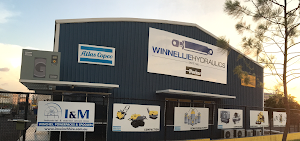Steam Trap Types
There are two basic designs for the thermostatic steam trap, a bimetallic and a balanced pressure design. Both designs use the difference in temperature between live steam and condensate or air to control the release of condensate and air from the steam line.
Thermostatic or Bimetallic
In a thermostatic bimetallic trap it is common that an oil filled element expands when heated to close a valve against a seat. It may be possible to adjust the discharge temperature of the trap – often between 60oC and 100oC.
This makes the thermostatic trap suited to get rid of large quantities of air and cold condensate at the start-up condition. On the other hand the thermostatic trap will have problems to adapt to the variations common in modulating heat exchangers.
- intermittent operation
- fair energy conservation
- fair resistance to wear
- good corrosion resistance
- poor resistance to hydraulic shocks (good for bi-metal traps)
- do not vent air and CO2 at steam temperature
- good ability to vent air at very low pressure
- excellent ability to handle start up air loads
- excellent operation against back pressure
- good resistance to damage from freezing
- good ability to purge system
- excellent performance on very light loads
- delayed responsiveness to slugs of condensate
- fair ability to handle dirt
- small comparative physical size
- poor ability to handle flash steam
- open or closed at mechanical failure depending of the construction
Float Steam Traps
In the float steam trap a valve is connected to a float in such a way that a valve opens when the float rises.
The float steam trap adapts very well to varying conditions as is the best choice for modulating heat exchangers, but the float steam trap is relatively expensive and not very robust against water hammers.
- continuous operation but may cycle at high pressures
- no action at no load, continuous at full load
- good energy conservation
- good resistance to wear
- good corrosion resistance
- poor resistance to hydraulic shocks
- do not vent air and CO2 at steam temperature
- excellent ability to vent air at very low pressure
- excellent ability to handle start up air loads
- excellent operation against back pressure
- poor resistance to damage from freezing
- fair ability to purge system
- excellent performance on very light loads
- immediate responsiveness to slugs of condensate
- poor ability to handle dirt
- large comparative physical size
- poor ability to handle flash steam
- closed at mechanical failure
Inverted Bucket Steam Trap
In an inverted bucket steam trap a leverage system multiplies the force provided by the bucket to open a valve against the pressure. The bucket is open at the bottom and robust against water hammers.
- intermittent operation – condensate drainage is continuous, discharge is intermittent
- small dribble at no load – may leak steam, intermittent at light and normal load, continuous at full load
- good energy conservation
- good resistance to wear
- good corrosion resistance
- excellent resistance to hydraulic shocks
- vents air and CO2 at steam temperature
- poor ability to vent air at very low pressure
- fair ability to handle start up air loads
- excellent operation against back pressure
- good resistance to damage from freezing
- good ability to purge system
- good performance on very light loads – but may leak steam if there almost no condensate load for the bucket to float
- immediate responsiveness to slugs of condensate
- excellent ability to handle dirt
- large comparative physical size
- fair ability to handle flash steam
- open at mechanical failure
Thermodynamic Disc Steam Traps
The thermodynamic trap is an robust steam trap with simple operation. The trap operates by means of the dynamic effect of flash steam as it passes through the trap.
- intermittent operation
- poor energy conservation
- poor resistance to wear
- excellent corrosion resistance
- excellent resistance to hydraulic shocks
- do not vent air and CO2 at steam temperature
- not recommended at low pressure operations
- poor ability to handle start up air loads
- poor operation against back pressure
- good resistance to damage from freezing
- excellent ability to purge system
- poor performance on very light loads
- delayed responsiveness to slugs of condensate
- poor ability to handle dirt
- small comparative physical size
- poor ability to handle flash steam
- open at mechanical failure



